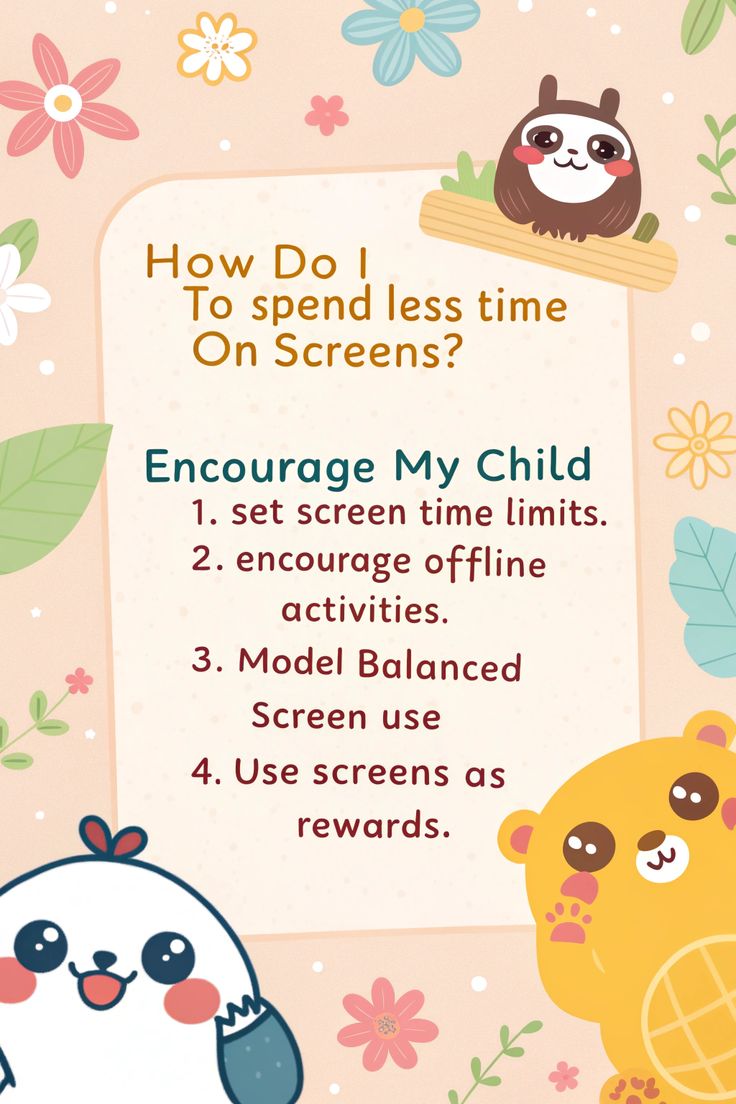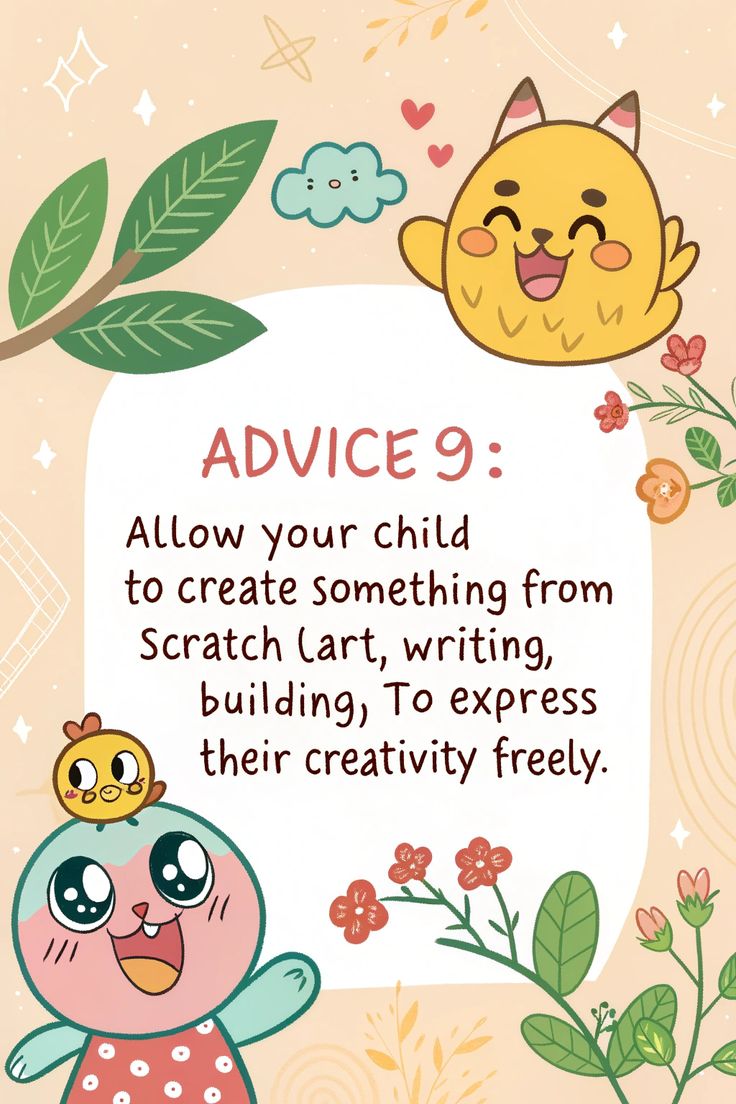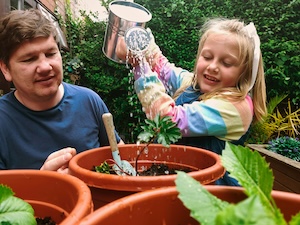Offline Sports Art Science STEM Nature Screen-free Activities Unplugged
Incrediblekids.com
Balancing Screen Time with Other Activities for Kids
100+ Activities to Reduce Screen Time
During Covid 19 alot of parents resorted television screens and technology based entertainment. If you haven't gotten a handle on that yet, than this page is for you. I will give you some practical advise to start that journey back to family time and joyful exchanges with your kids.
It all comes down to how the screentime is being used, if it’s interfering with other, healthier activities, if the parent notices an increase in poor behaviors and/or a decrease in quality of sleep, if it’s creating stress and anxiety, etc.
Technology addiction, also known as internet addiction disorder or digital addiction, is a growing concern characterized by compulsive and excessive use of technology, including social media, gaming, and online activities, leading to negative consequences in various aspects of life.
It's often described as an impulse control disorder, where individuals may continue using technology despite knowing it's causing harm.
Signs and Symptoms:
Obsessive thoughts: Constantly thinking about the next time they can use the device or engage in online activity.
Withdrawal symptoms: Experiencing irritability or anxiety when access to technology is limited.
Compulsive behavior: Continuing to use technology despite negative consequences, such as neglect of responsibilities or strained relationships.
Loss of control: Difficulty limiting or stopping use, even when they know they should.
Preoccupation: Thinking about the activity, device, or online experience constantly.
Tolerance: Needing to use technology for longer periods or at higher levels to experience the same level of satisfaction.
Potential Consequences:
Mental health issues: Anxiety, depression, and stress.
Social and relationship problems: Neglecting personal relationships and social interactions.
Academic or work performance issues: Difficulty concentrating and completing tasks due to constant distraction.
Physical health problems: Sleep disturbances, poor diet, and sedentary behavior.
Financial problems: Excessive spending on online purchases or gambling.
Treatment and Management:
Seeking professional help: Therapy, such as cognitive behavioral therapy (CBT), can help individuals develop coping mechanisms and address underlying issues.
Setting limits: Establishing boundaries for technology use, such as tech-free zones or specific time limits.
Finding alternative activities: Engaging in hobbies, sports, and other non-technology activities.
Recognizing triggers: Identifying situations or emotions that lead to excessive use.
Building a support system: Connecting with friends, family, or support
If you want to know how to limit screen time for kids, we’ve sharing our best tips below!

Actively encourage other activities
Some research suggests that screen time contributes to obesity in children due to a lack of physical activity, and while I agree that electronic devices cause kids to be more sedentary, it’s our duty as parents and caregivers to encourage our kids to be more active. It’s really easy to use tablets as babysitters, and we need to do a better job of getting involved and encouraging ourselves and our children to get up and get moving! If you want to know how to limit screen time for kids, get into the habit of organizing fun activities that get your kids away from their screens.
"Encourage Creativity: Let Your Child Create from Scratch to Boost Expression"
Foster your child's creativity by allowing them to create something from scratch, whether it’s art, writing, or building. Providing the freedom to express themselves freely nurtures their imagination, problem-solving skills, and confidence. This valuable experience helps children develop a sense of pride in their work and encourages independent thinking. Perfect for parents seeking ways to support their child's creative growth and emotional development.

Create ‘electronic free’ zones and times
As mentioned earlier, some studies indicate that screen time may cause sensory overload, interfere with sleep, decrease the development of social skills, and impair language development. If you’re trying to figure out how to limit screen time for kids, consider designating certain places and/or times of the day as ‘screen free’. For example, if your child struggles with sleep, you may make his or her bedroom a screen-free zone, or if your child is struggling with language and/or social skills, you may prohibit screen time at meals, during playdates, in the car, and at any other time your child has a chance to socialize with others.
Set up parental controls
I touched on the idea of setting up parental controls earlier, but wanted to call it out as a separate point as I think it’s important. There are lots of great parental control apps you can install on your child’s electronic devices that not only allow you to monitor what your child is doing (and seeing) online, but also enable you to set time limits on their screen time. This can be really helpful in situations when you can’t monitor your child closely (i.e. while you’re on an important phone call, when your child is with a babysitter, etc.).
Remember to educate your children and include them in the decision making process, to be a good role model, to set limits, and encourage activities without
screens as often as possible!
screens as often as possible!
Here are 100 ideas to find other ways to help them discover a new interest or taking up an old interest to keep them busy off-line.
Have an open discussion with your children-help them come up three places that they want to go over the summer and five things they would be interested in doing at home...like sports, crafts, experiments, building, making, exploring, relaxing and all the things below that might interest them. Remember cell phone plans can be suspended over the summer and the morning sun is great for rejuvenating and energizing their little minds and souls.
Prepare your yard for interesting unstructured and open ended summer play.

Scheduling and Prioritizing:
You can balance your children's screen time effectively by implementing a structured schedule and setting priorities. Create a schedule that designates specific time blocks for different activities, including screen time, homework, outdoor play, and family time.
Rewarding and Incentivizing:
You can develop a token system where children earn tokens for completing chores or homework. Children can then exchange tokens for additional screen time. It helps them see that taking on tasks comes with its own set of rewards, making them more accountable and responsible.
Diversifying and Offering:
Get creative! You can provide an extensive range of alternate activities. Just look around for inspiration. Here's an intriguing idea: create a jar filled with slips of paper, each suggesting a non-screen activity. When children express boredom, they can pick an action from the jar. This promotes exploration and variety.
Examples and Options:
Reading
Outdoor Play
Arts and Crafts
Exercise Routine
Cooking/Gardening
In wrapping up, remember that reducing screen time is about fostering a balanced and healthy environment for our kids. By incorporating these tips and strategies, we're not just limiting screen time but nurturing their well-being, supporting their growth, and building stronger connections with them.
Let's embark on this journey together for a brighter, more engaging childhood! And, hey, if you need some tech help along the way, we're here for you.
Dive into an empowering journey with Mobicip! Try this free trial and see how Mobicip can be your guide to keep your child safe and balanced online. Head to Mobicip now and kickstart this exciting chapter in your child's digital well-being!
FAQ's
How much screen time is okay for a 5-year-old?
For a 5-year-old, keeping screen time to around one hour a day is generally recommended. This includes watching shows or playing games. But remember, it's more about quality than quantity – make sure what they're watching or playing is age-appropriate and helps them learn and have fun!
How do I get my child off the screen?
Getting your child off the screen can be a team effort! Start with clear rules, like no screens during meals or before bedtime. Use parental control apps like Mobicip to help your child follow a screen time schedule. Plan fun activities together – games, outdoor play, or reading books. Be a role model by showing them that there's a whole exciting world beyond the screen.
What are the symptoms of too much screen time?
When kids spend too much time on screens, it can affect them in different ways. If you notice your child becoming irritable or having trouble sleeping, it could be a sign of too much screen time. They might also find it harder to focus and socialize, and you could see changes in their mood or even issues with schoolwork.

Studies indicate that too much screen time can have a negative impact on children and many parents are searching for ways to protect their kids and regulate screen time. When students participate in offline activities they naturally spend less time on their devices and social media and see a variety of mental health benefits. Aside from reducing screen time, offline activities provide students with an opportunity to grow, learn new skills, and collect experiences they can add to their resumes.
Regardless of whether your student is participating in an online or offline activity, it is important to pay attention to their actions, have an open dialogue, and step in when needed. We created a list of offline activities that can help students of all ages find new ways to unplug.
Tech-Free Summer Bucket List
Looking for ways to unplug and reconnect this summer? Our Tech-Free Summer Bucket List is packed with fun, screen-free activities that help kids explore, create, and make real-world memories. From backyard adventures to hands-on projects, this free download is your go-to guide for a season full of offline joy. Download it now and give your family the gift of a more mindful, connected summer!
Download our FREE Tech-Free Summer Bucket List
Building and LEGO

Ages 4+
Construction toys like Legos can foster a wide range of abilities, including motor skills, spatial skills, language skills, divergent problem solving, and non-verbal intelligence (Source: Parenting Science). Whether you’re following a set model of instructions or building things from scratch, Legos are a great way to unplug and have fun. Families can spend time building sets together, engineering machines, or using Legos to act out their favorite stories.
Our recommendations:
Books
Ages 2+
There are numerous benefits to reading at any age. “Reading out loud to younger children can help curb problem behaviors like aggression, hyperactivity and difficulty with attention” (Source: New York Times). “Teens can gain skills from reading outside of the classroom including expanding their vocabularies, handling complex ideas, improving their score on the verbal section of a college admissions test, and helping them see solutions to their own problems” (Source: Family Education). Parents can encourage reading by reading out loud to their children at a young age, showing interest in the books that their kids are reading, or encouraging them to read the book version of their favorite movies. Visit your local public library and sign up for their summer reading program or consult their book club options or recommendations.
Recommended Books For Younger Children
Recommended Books for Older Children:
Recommended Books For Teens & Young Adults:

Puzzles
Ages 1+
Puzzles have the ability to positively impact children by developing or improving hand-eye coordination, fine motor skills, gross motor skills, problem solving, shape recognition, memory, goal setting, and learning to work with their environment (Source: Child Development Institute). Families can spend time together solving puzzles and coming up with a strategy together such as building out the border first or grouping pieces together based on colors. Consider taking advantage of your puzzle time to have an open dialog with your children.
Our recommendations:
Board Games and Card Games
Ages 3+
Game night is one of the most tried and true methods for families to spend more time together. Games don’t need to be overly educational to have a positive impact on students (Source: Scholastic).
Games can help children master new skills such as number and shape recognition, letter recognition and reading, communicating verbally, sharing, waiting, taking turns, enjoying interactions with others, the ability to focus, and lengthening their attention span. Family card games can teach math, memory, self-confidence, how to face competition in a healthy way, and strategic thinking (Source: The Wall Street Journal). Parents can set a positive example for their children by following the rules of the game while not taking winning or losing too seriously. Games are also a great way for tweens and teens to spend time together offline.

Our recommendations:
Bicycling
Ages 4+
Aside from being good for your health, bicycling also provides a lot of other positive benefits to children. Teaching kids how to ride a bike can build stamina, coordination, balance, and persistence (Source: Child Development Institute). It’s important to remember that riding bikes can be dangerous, so parents need to set clear limitations and teach their children about bike safety before they start riding. Then, parents can help their children find the right bike for their age and skill level. Families can find bike paths to ride together, have friendly speed races, and use biking as a mode of transportation for short trips.
Our recommendations:
Craft Trays & Kits

Ages 4+
Many parents put the majority of their focus on their children’s test scores, but fostering their creativity is equally important for mental growth. In fact, arts and crafts can help boost a student’s academic performance in subjects like math and literature (Source: Livestrong.com). Activities such as painting and pottery also teach kids problem-solving and communication skills. Craft kits in particular are great for both children and parents because they offer easy-to-follow guidelines and clean up is a breeze!
Our recommendations:
Writing or Journaling

Ages 4+
Child Researcher Marlene Ritchie, B.S., M.N.suggests keeping a regular written record (journaling or keeping a pocket notebook) of thoughts, feelings, happenings and dreams. The journal is a non-judgmental friend, a therapist, and will be a historical reference to significant events in the writer’s life. Scientific research has identified many physical, psychological and emotional benefits from journaling. Mental health therapists recommend journaling as a means of dealing with traumatic experiences.
Our recommendations:
Drawing & Coloring

Ages 4+
Drawing is one of the earliest forms of artistic activity that children learn how to do. Even adults discover the relaxation and self-expression benefits of drawing, sketching, and coloring (Source: Scholastic). Children have a similar experience, with the added advantage of motor skills development. Kids can practice free-form sketching or coloring in order to boost creativity and improve their ability to focus or to encourage educational learning, whether you’re teaching a child geography, animals, colors, or even numbers. For parents and teachers, these inexpensive activities require limited preparation and are well-suited to travel. Additionally, coloring books and sketch pads can be used by students of all ages which makes it one of the best offline activities.
Our recommendations:
Sports

Ages 4+
Playing sports with your child at home gives you the ability to bond with each other and engage in physical activity. Psychology Today points out that organized sports through a school or club league are also beneficial when it comes to learning valuable life lessons. Whether your kid picks up baseball or cheerleading, they will quickly understand the importance of commitment and resilience. Plus, the more time your child spends on sports, the less time they have to participate in unhealthy habits, like underage drinking, playing mind-numbing video games, and eating junk food.
Our recommendations:
Playing an instrument

Ages 3+
According to TIME, music can help develop your child’s brain. However, they have to actively participate in making music to reap the full benefits. Learning a musical instrument improves a child’s neural processing and reading skills, along with their ability to focus. Research has even discovered that students who take music classes are more likely to graduate from high school and attend college. If you want your child to stick with this hobby, you should help them find a musical instrument they enjoy. Forcing them to play the trombone when they really love the drums is a recipe for disaster. We’ve linked some of our favorite videos about learning musical instruments below!
Our recommendations:
Gardening

Ages 4+
Gardening is often overlooked when your family is trying to decide on a fun, educational hobby. PBS urges parents to consider getting their hands dirty when teaching children science and math. Measuring out the soil and water gives your kids a better understanding of arithmetic, while learning about the lifecycle of a plant can improve your child’s biology grade. You can also use gardening to encourage healthy eating habits! Grow simple plants–like garlic or spinach–and use the ingredients to cook a nutritious meal. Your kids will be proud to showcase their hard work on the dinner table!
To garden with toddlers, simplify tasks, use child-sized tools, choose easy-to-grow plants, and create a safe, designated space for exploration and play
. Prioritize safety by removing hazards and avoiding poisonous plants. Keep expectations realistic by accepting that the garden won't be perfect, and focus on the fun of the process, like digging, watering, and discovering plants and insects.
Set Up for Success
Create a Safe Space: Designate a small, contained area free of sharp objects, spiky plants, and hazards like fertilizers, allowing your toddler to explore safely.
Give Them Their Own Plot: Provide a small, separate plot or container for your toddler so they have their own space to dig and plant without interfering with your own efforts.
Use Child-Friendly Tools: Get small, manageable tools that are easy for little hands to use, which will help them feel involved and capable.
Keep it Simple and Engaging
Choose Easy-to-Grow Plants: Opt for plants like beans, cherry tomatoes, sunflowers, pumpkins, and radishes that mature quickly or have a fun "wow" factor, like tall beanstalks or bright flowers.
Focus on the Fun: Don't strive for perfection; embrace the mess and chaos as part of the process.
Encourage Exploration: Let them dig in the dirt, search for minibeasts (insects), and help water the plants.
Incorporate Other Activities: Decorate plant markers with paint, look for different bugs with a magnifying glass, or create a "small world" play area with toy animals and natural elements.
Manage Expectations
Be Prepared for Mess: Dress your child (and yourself) in old clothes and footwear that you don't mind getting dirty.
Understand Toddler Priorities: They may not grasp the full "big picture" of gardening and might use compost for dirt castles or pick tomatoes before they're ripe.
Take Photos and Make Art: Document the process with photos and drawings to help your child remember the experience and the plants they've grown.
Our recommendations:
Camping

Ages 4+
Camping is an entertaining activity for the entire family. Whether you’re 8 or 80. Camping helps reduce stress and encourages you to connect with your environment (Source: KOA). Your children will especially benefit from this outdoor adventure as they practice problem-solving and survival skills while pitching tents, making a fire, and learning about surrounding plants and wildlife. It will also give you a chance to unplug for a while and strengthen your relationships. Bring a guitar, some marshmallows, and some fun nature games to make your camping experience extra special!
To plan a successful camping trip with toddlers, focus on safety, routine, and entertainment by choosing a family-friendly campsite, packing familiar items, and bringing plenty of layers and snacks. Keep the first trip short, close to home, and with amenities like indoor plumbing. Prepare by setting up gear beforehand and creating a loose schedule that includes nap time and downtime.
This video provides practical tips and demonstrations of gear for camping with toddlers:
The Weather Network YouTube • Jun 27, 2023
Before you go
Do a test run: Set up the tent in your backyard to get comfortable with the process and let your toddler get used to the gear.
Book smart: Choose a family-friendly campsite close to home with amenities like a playground, swimming area, and indoor plumbing.
Keep it short: Plan a short trip, like one or two nights, to make the effort worthwhile and less overwhelming.
Plan for routine: Maintain your toddler's regular schedule as much as possible, especially for naps and mealtimes.
Prep ahead: Pre-cut food and pack as much as you can to make camp setup and mealtimes easier.
What to pack
Shelter and sleeping: A large, easy-to-set-up tent is essential. Consider a portable crib or pack 'n play for sleeping and daytime play. Pack layers of clothing, warm sleep sacks, hats, and a sleeping bag for your toddler.
Safety and health: Bring a first-aid kit, child-safe bug spray, sunscreen, and any necessary medications. Pack more diapers, wipes, and rash cream than you think you'll need.
Familiar items: Bring favorite stuffed animals, blankets, books, and familiar sippy cups or plates to create a sense of comfort.
Food and snacks: Pack plenty of easy-to-eat snacks and meals. A portable high chair or booster seat can be helpful.
Entertainment: Pack toys, books, glow sticks, and craft supplies. Binoculars, a nature guide, and a small backpack with toys can also be great additions.
At the campsite
Baby-proof the area: Before letting your toddler explore, walk around the campsite to remove any hazards like broken glass, sharp rocks, or dangerous plants.
Set boundaries: Establish clear rules around the campfire and other potential dangers. Keep the fire at a safe distance from the tent.
Supervise at all times: Always keep a close eye on your toddler, especially near water or the fire.
Embrace the mess: Pack extra clothing and be prepared for your toddler to get dirty. Allow them to play and explore in a safe way.
Be flexible: Temper your expectations and be prepared to go with the flow. Naps, mealtimes, and the overall schedule may be dictated by your toddler, and that's okay.
Write your number on their hand: In case of separation, write your campsite number on their hand as a precaution.
Our recommendations:

Cooking and Baking
Ages 4+
Helping in the kitchen can boost your child’s math skills, language skills, and even their emotional development. Since baking and cooking require waiting, it can help your children learn the value of patience. Start early enough and your teenager may be willing to take over the kitchen once or twice a week. Learning how to cook is especially beneficial for picky or unhealthy eaters. Making a dish from scratch can help your child develop a more sophisticated palate and it will give them a sense of pride once the food is finally served. In the beginning, kids can start out slow by helping you mix a few ingredients or reading off the instructions. As they get older and gain more kitchen confidence, challenge your child to double or half their favorite recipe which will help develop their math skills.
Our recommendations:
Blanket Forts
Ages 2+
According to the Waldorf School educational and environmental psychologists, along with educators in the field, have taken a keen interest in fort building. It’s a constant presence in early and middle childhood, the creation of secret places, often in plain sight, and the experts agree that den, fort, or secret space creation offers a host of cognitive and psychological benefits for the developing child. Building forts helps children create a rule structure of their own and provides a sense of control. Encourage your children to build blanket forts while setting expectations. Outline which materials (e.g. blankets, sheets, couches) they can use and how they should deconstruct their forts when finished.
Make a Fort: Ideas For Backyard Fort
Children enjoy making a fort. They love building them, and they love holding up a mess of treats in them. If you’re looking for summer or holiday fun for kids in the great outdoors that will keep them occupied for hours, bring them out to build a fort. Before letting them make a fort, you can teach them the basics of how to do it. By this, they will have an idea of creating it by themselves.HOW TO MAKE A FORT: THE BASICSIf you build a cardboard box fort, the Four F’s must be considered:Frame, fabric, fasteners, and floor.The Fort FrameThe fort’s structure is what the cloth with the fasteners would be stretched over or tied to.
A rope that is tied between two or more trees or chairs.
Bamboo poles leaned against the house or fence.
Bamboo poles are tied into the frame of a teepee.
The Fort Fabrics

Go to the thrift shop, where you can buy a pile of sheets, curtains, and other big pieces of cloth if you’d like not to use your own blankets and mattresses. With wide canvas drop cloths, you can also make a fort. Try some tarps or plastic drop cloths or table cloths for a portable fort that can keep your kids outside playing while it’s raining.
The Fort Fasteners
You ought to be able to fasten the fabric to the frame to create a fort. Depending on what kind of strength your children are creating, a mixture of fasteners would probably be needed.
Outstanding fasteners include:
Binder clips.
Rubber bands.
Safety pins.
Clothespins.
Duct tape.
Rope, twine, or string.
IDEAS FOR BACKYARD FORT
There are many options for building a backyard fort.
Below are the four ideas you and your children can use:
Simple Tent Fort

A rope strung between two structures is all that you need for a basic tent fort. Over the rope, drape a large piece of fabric or fasten two pieces of fabric with clothespins or clips to it. Stake the ends down, and you will have a quick procedure of making a simple tent fort.
Table Fort

Your kids can build a fort if you have a patio table by draping fabric over it and making it a comfortable, soft floor with blankets or rugs. A folding table can be found, too. You can lash bamboo poles to the legs if the table is very sturdy so that they reach a few feet over the tabletop.
At the top of the poles, tie a long piece of rope, twine, string around the circumference, fasten cloth to it or drape it over the top.
Cardboard Box Fort

In order to make a cardboard castle and tunnels, a cardboard box fort can be as easy as throwing a single refrigerator box back out, or it can be as complex as linking boxes and boxes and more boxes together. However, if you want to cardboard box fort kit, which is easy and fast to install, Make-A-Fort fort kits can let you create a wide variety of forts such as a maze, tunnels, castle, and more!
This is something like a mansion in a wooden box. Building this with your children which could feasibly keep keep them occupied all summer long.
Bamboo Pole Fort

Bamboo poles are solid and robust, and for forts, they make excellent frames. Thin poles-think garden stakes are just the right height for clothespins, allowing the fabric to attach to the bamboo pole easily. You can lean the poles against the fence or the tower, or you can turn them into your fort’s teepee.
Keep the six bamboo poles together to build a teepee fort. Wrap about four inches from one end with three or four wide, tight rubber bands around them. Stand up and stretch the legs, so they’re about perfect, and tie the cloth together.
Our recommendations:
Paper Airplanes
Ages 4+
Being fascinated with airplanes can be a great gateway to STEM learning for younger children. Making and playing with paper planes can lead to discussions about aerodynamics (the forces that impact plane flight): thrust, lift, drag, and gravity/weight (Source: Penn State College of Agricultural Sciences). Older children can also learn about plane movements like roll, yaw, and pitch. “The most amazing thing about a paper airplane is all you need to make one is a sheet of paper—nothing more. You don’t need scissors, glue, tape, or paper clips. A few folds, a couple of adjustments, and you have a superb paper flyer. The properties of paper give the airplane all the attributes it needs.” (Doherty n.d.).
Our recommendations:

Robotics/Drones/Remote Control
Ages 4+
Robotics is often used in clubs, after-school activities, and competitions to expose K-12 students to technology, engineering, math, and science. Students with a natural interest in STEM will gravitate towards these offline activities but robotics, drones, and remote control toys can be beneficial for students of all ages. Younger students can learn about basic mechanics, while older students can get more in-depth knowledge on building and engineering machines..
Our recommendations:
Volunteering
Ages 14+
Aside from impressing college admissions officers and future employers, volunteering offers students a lot of benefits including helping others, developing time management skills, networking opportunities, and building soft skills. Scholarships.com recommends that high school students who already know what their intended field of study will be once they’re in college should try finding volunteer opportunities in those areas. For example, if you like the idea of becoming a lawyer, find a legal aid clinic to volunteer or work for.
Sewing

Ages 6+
Aside from being a valuable life skill, sewing offers a lot of benefits to students. Montessori Services suggests that sewing, weaving, and knitting activities help young children develop manual dexterity and manipulative skills. By using their hands, children more fully integrate learning experiences. Weaving, sewing, and other kinds of handwork extend the benefits of Practical Life work for the older child. Children will continue to develop fine motor skills and concentration, while building self-confidence with successful experiences.
Our recommendations:
Science Experiments
Ages 2+
It’s easy to expose your students to science concepts at home. Children are naturally curious and love experimenting. At-home science experiments can inspire the whole family. Learn interesting science and technology lessons by testing out different materials and creating new things together.
Our recommendations:
Why a Screen-Free Summer Matters
Kids today spend an average of 5–7 hours a day on screens. A screen-free summer can improve sleep, increase physical activity, and support cognitive and emotional development. Best of all? It gives you the chance to be part of their day—in person, or through the power of your voice.
So, this summer, unplug the devices and plug into real connection. Let’s make 2025 the summer of stories, sunshine, and screen-free joy. Enjoy Thr information belowl.
How to build a small world play scene,

Select a theme like a forest or desert, then collect natural items and household objects such as rocks, leaves, and small toys to create the environment and inhabitants
. Involve children in the process by inviting them to help choose materials and set up the scene, which can stimulate imagination, storytelling, and learning through sensory exploration and role-playing.
1. Choose a Theme
Decide on a concept: Think about a specific environment, such as a jungle, ocean, farm, or a location from a favorite story.
Involve children: Ask children what kind of world they want to create, or present a few ideas to inspire them.
This video demonstrates how to create a small world play scene in a forest theme:
Niwasa HamiltonYouTube • Feb 12, 2021
2. Gather Materials
Natural items: Use leaves, pine cones, sticks, rocks, flowers, and sand to build natural landscapes.
Household items: Incorporate small toys (like cars, animals, or figures), blocks, fabric (for water or grass), cardboard, and even kitchen items like lentils or playdough.
Sensory items: Include materials with diverse textures, such as scarves, fabric, or even dyed pasta and playdough to add sensory elements.
3. Build the Environment
Use a base: A simple tray, box lid, or cookie sheet can serve as the foundation for your small world.
Create landscapes: Use playdough to make a stream, or arrange rocks to create a path.
Add details: Incorporate small figures like animal figurines or small cars to populate the scene.
Make it educational: You can use elements to teach children about different habitats, animal needs, or places from books and cultures.
This video shows how to create a small world play scene with various natural and household items:
Boston Children's MuseumYouTube • Dec 5, 2020
4. Invite Play
Provide opportunities: Present the completed small world as an "invitation to play," allowing children to interact with the materials as they see fit.
Encourage storytelling: Small worlds provide a physical space for children to create their own narratives and explore different scenarios or feelings in a safe way.
No limits to creativity: Emphasize that there are no rules, and children can use the materials in unconventional ways to express their ideas.
Outdoor Play
In a world where screens are everywhere, giving kids a screen-free summer can feel like a bold move—but it’s one that pays off. From boosting creativity and improving focus to building deeper family bonds, screen-free activities help kids thrive, especially during the long, sunny days of summer. When we spend time outdoors, take a walk around the neighborhood, or visit a nearby park, our senses come alive! We can inspire our children to observe and understand nature by listening for animal sounds, feeling the texture of rocks, seeing the shade made by the trees, smelling freshly cut grass, and tasting raindrops as they fall from the sky.
Play schemas are repeated patterns of behavior or urges that children use to explore and understand the world, such as the urge to throw objects (trajectory schema), move things from one place to another (transporting schema), or twist and spin (rotation schema). Observing these schemas helps adults understand a child's current interests, provide relevant materials, and support their learning by offering alternative, constructive ways to express their natural urges.
Common Types of Play Schemas
Here are some common play schemas and examples of how children express them:
Transporting Schema: Moving objects from one place to another, often using containers, baskets, or pockets.
Rotation Schema: An interest in spinning, twisting, turning, and rolling objects or their own bodies.
Trajectory Schema: Exploring movement, throwing, or dropping objects to see how they move through space.
Enclosing/Enveloping Schema: Creating spaces or covering objects, such as building a fence, putting things in a box, or wrapping themselves in blankets.
Connecting Schema: Joining objects together, like connecting train track pieces, using tape, or building with interlocking bricks.
Positioning/Ordering Schema: Lining up objects, arranging them in order, or sorting them by category.
Orientation Schema: Looking at the world from different angles, climbing, hanging upside down, or looking at things from the side.
Transformation Schema: Changing the form or appearance of something, such as mixing paints, disassembling toys, or changing an outfit on a doll.
Why Play Schemas Matter
Cognitive Development: Play schemas are fundamental to concept development, helping children organize information and build a framework for understanding new situations.
Skill Development: Engaging in schema play helps children develop hand-eye coordination, gross motor skills, and an understanding of cause and effect.
Informing Adults: Recognizing play schemas provides insight into a child's natural urges and interests, allowing caregivers and educators to create meaningful learning experiences.
Behavior Guidance: Understanding schemas can help redirect undesirable behaviors by offering alternative, constructive outlets that satisfy the same developmental need.
You can use outdoor play to support various play schemas by providing opportunities for activities like transporting materials, building and creating, exploring movement, and making connections
. For instance, a transporting schema can be supported by moving buckets of sand or logs, while a transforming schema can be explored through mixing mud and water. An enclosing schema is encouraged by building dens with branches, and a connection schema by building structures with sticks to connect two points.
This video explains play schemas and their importance:
Home and on the Way YouTube • May 8, 2023
Transporting
Moving pebbles, sticks, or logs from one area to another.
Filling a bucket or wheelbarrow with leaves or bark and moving it.
Transforming
Mixing soil and water to make mud pies or a mud kitchen.
Using natural items like grass, leaves, and stones to create pretend soups and stews.
Building sandcastles or "sand monsters".
Enclosing
Building dens or forts with branches, logs, and leaves.
Digging holes and burying items.
Using sticks to build small fences or enclosures around a specific area.
Connection
Using sticks to connect trees together.
Building a bridge to cross a puddle or stream.
Creating a pathway or maze with stones or sticks.
Trajectory
Throwing sticks, pinecones, or balls.
Rolling objects like balls down a hill or through a tube.
Jumping, rolling, and crawling in the environment.
Orientation
Climbing trees or playground equipment.
Hanging upside down.
Crawling through small spaces, like tunnels made of sticks.
You can watch this video to see how children's play schemas are observed in a forest school:
Forest School LouYouTube • Jul 11, 2022
General tips
Provide open-ended materials like sticks, stones, sand, and water to support exploration.
Observe and join in with the child's play to extend their learning, without taking over.
Follow the child's lead and let them repeat actions as many times as they need to.
Here are some of the best ways to keep your children entertained, engaged, and off the screen—all while creating lasting memories.
Managing Early Learners ScreenTime
Managing Tweens and Teens Screentime
How to Build a Backyard Play Space
Discovering Your Child's Interests
Benefits of Morning Sun and Fresh Air
Montessori Style Nature Experiences
Incredible Family Playspace and Activities
Unstructured Play and Playdates
Discovering Outdoor Sensory Delight
Camp Love- DIY Summer Camp Resources
Parent Guide to Finger Lakes Recreation
Lists of Outdoor Play Ideas for the Whole family
Easy Backyard Nature Activities
Family Fun in a Community Park or playground
Spying on Animals in the Great Outdoors
Exploring the Beach and Shorelines
Playtime for 4 years & beyond
Building Small Worlds and Sensory Bins- Pretend Play
Nature Play that Rocks -Home
Health Benefits of Nature Play
Nature play by Age
Resources for Playing Outside
My YMCA Curriculum Featured on How Stuff Works:
10 Earth Day Activities to Celebrate Our Planet - HowStuffWorks
Animal Activities
More resources for parents, students, & educators
100+ On line Educational Activities For Students
360+ Teen Slang, Emojis, & Hashtags Parents Need to Know (The Ultimate List)
The Impact of Screen Time on Motivation
Conclusion
Offline activities are great ways for students to learn new talents and broaden their skillset. The more interested students are in offline activities the less amount of time they will spend on screens. It is important to dialogue and set parameters with your students to ensure they have a good balance between online and offline activities.
